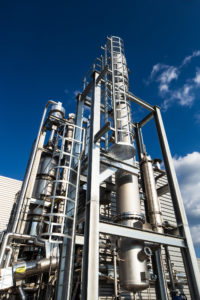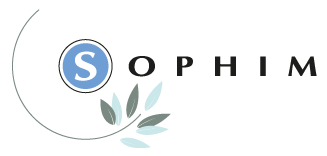1. Shark squalane disappeared in western countries
So why extract squalene from liver oil from small sharks caught more than 300 meters deep? It was an industrial ease choice at the beginning of its use in the 50s, because 40 to 80 % of squalene is found in the liver oil of these small sharks, depending on the species.
Squalene was also discovered by a Japanese Mitsumaru Tsujimoto in 1906 in shark liver oil.
Japan is a fishing country. Squalane has perfect properties for Japanese cosmetic creams. The conditions were met for Japan to become the main user of squalane with 40 % of the world market in the 2000s.
But with targeted fisheries (centrophorus granulosus), with the protection of deep-sea fish and the ban on this fishing in Europe in 2006, squalane has experienced a major supply crisis. The mad cow crisis has accelerated the disappearance of shark squalane in cosmetics in the Western world. There is still a substantial market in Japan, including nutraceutical squalene. Synthetic and olive squalane took over.
2. Will synthetic squalane be competitive?
In 1978, the Japanese company Kuraray launched a synthetic squalane (US Patent No. 3,794,692 of Feb 26, 1974) for the manufacture of squalane by dimerization of farnesene of petroleum origin and hydrogenation.
Their selling prices have always been higher in the market.
30 years later, the American biotech AMYRIS took up Kuraray’s idea. Indeed, they had made a great success for the manufacture of farnesene by fermentation of sugar cane. After attempts to sell farnesene as aircraft fuel, they took up Kuraray’s idea of dimerizing farnesene to make squalane which even became their marketing showcase.
Their heroe ingredient has experienced great development thanks to very low selling prices and a frenetic marketing. AMYRIS was able to gain about 30 % of the squalane/squalene market in a growing market.
The profitability of biosynthetic squalane remains to be demonstrated. Indeed, farnesene obtained by fermentation will remain an expensive raw material because farnesene is also used as a precursor to facilitate the manufacturing process of vitamin E instead of citral.
In addition, the process of dimerization of farnesene, hydrogenation and purification remains an expensive process.
So, will natural be more credible than synthetic?
Every vegetable oil contains about 1 % unsaponifiable matter (vitamin E, squalene and sterols).
Each oil has a specific composition of its unsaponifiable. During the physical refining of edible oils, the distillation of free fatty acids concentrates this unsaponifiable material in the by-products of refining, the Fatty Acid Distillate. This very heterogeneous food residue containing free fatty acids, unsaponifiable, ethyl esters, triglycerides, is difficult to value in other industries. Moreover, it is no feed, no food.
Soy, which is the richest oil in vitamin E, is the raw material traditionally used for the extraction of natural vitamin E.
Olive oil is the richest in squalene, and in 1988, Hispano Quimica began extracting the squalene contained in the fatty acid distillate of olive oil. 10 years after synthetic squalane.
This is the beginning of the adventure of plant squalene.
If the circular economy model is virtuous, it requires large production capacities because the raw material contains less than 10 % squalene.

It is therefore necessary to value the by-products that represent more than 90 % of the raw material.
Hispano Quimica valued its co-products in lubricants. The young company SOPHIM used them as raw material to manufacture biodiesel before becoming a producer of 2nd generation biodiesel in 2014 in its 2nd factory opened in Almeria, Andalucia.
With a fully integrated process, the circular model has resisted well to the fluctuations resulting from the war in Ukraine. Indeed, despite a doubling of the price of raw materials, the price of the by-product (biodiesel) has followed the same price evolution and made it possible to maintain the price of Phytosqualan, despite the violent increases in energy and manufacturing intermediaries in 2022.
Fractionating column, SOPHIM’s Peyruis plant
But the great innovation of the market was the patent obtained by SOPHIM on 27/08/2010 (INPI n°2933403) on the global extraction of squalene, vitamin E and sterols in fatty acid distillate of vegetable oils.
This project was awarded the 2011 Pierre Potier Prize, which rewards innovation in chemistry in favour of sustainable development.
Implemented in our new factory in Almeria, Spain since 2014, this new process has made it possible to use new olive raw materials with very little squalene content, such as those from olive pomace oil (olive skin). There are still other sources of unused olive raw materials, but they require more industrial extraction capacity.
With a demand for ever more naturalness in cosmetics, the squalane market is in full development. If the available olive raw materials become insufficient, fatty acid distillates of sunflower and palm will provide new quantities of vegetable squalene. However, it takes one more step in the process to separate squalene from vitamin E. But this vitamin E is also valued in the process.
In short, SOPHIM has a unique model for its Phytosqualan.
Through innovation, its integrated model, new production capacities and the addition of new olive or vegetable raw materials, SOPHIM has brought a new security of supply for the future.
Its circular economy model proves every day the financial competitiveness of its Phytosqualan.
Discover Phytosqualan
To predict the future of squalane, you need to know its past.
Jacques Margnat, C.E.O.
Category: Squalane







